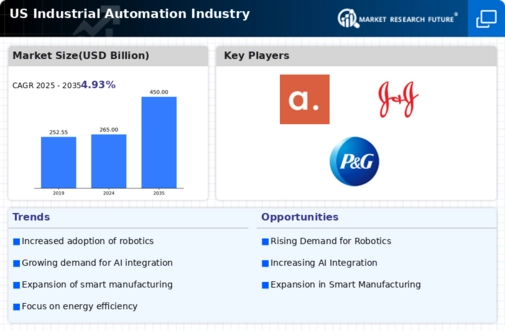US Industrial Automation Market Summary
The US Industrial Automation Industry is projected to grow from 265 USD billion in 2024 to 450 USD billion by 2035, reflecting a robust growth trajectory.
Key Market Trends & Highlights
US Industrial Automation Industry Key Trends and Highlights
- The market is expected to expand at a compound annual growth rate (CAGR) of 4.93% from 2025 to 2035.
- By 2035, the market valuation is anticipated to reach 450 USD billion, indicating substantial growth opportunities.
- In 2024, the market is valued at 265 USD billion, laying a solid foundation for future advancements.
- Growing adoption of automation technologies due to increased efficiency demands is a major market driver.
Market Size & Forecast
| 2024 Market Size | 265 (USD Billion) |
| 2035 Market Size | 450 (USD Billion) |
| CAGR (2025 - 2035) | 4.93% |
Major Players
Apple Inc (US), Microsoft Corp (US), Amazon.com Inc (US), Alphabet Inc (US), Berkshire Hathaway Inc (US), Meta Platforms Inc (US), Tesla Inc (US), Johnson & Johnson (US), Visa Inc (US), Procter & Gamble Co (US)













Leave a Comment